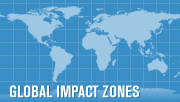Letter to FDA on arsenic, oil monitoring information
For the signed PDF of this letter, please CLICK HERE.
July 13, 2010
The Honorable Margaret Hamburg, M.D.
Commissioner
U.S. Food and Drug Administration
10903 New Hampshire Ave.
Silver Spring, MD 20993
Dear Dr. Hamburg:
On May 25, 2010 I wrote you to request information relating to the potential impacts on seafood from the prolonged use of chemical dispersants following the explosion aboard the BP Deepwater Horizon drilling rig. Although I have yet to receive any response to my letter, new developments that seem to indicate that the marine food chain in the Gulf of Mexico has already been contaminated by oil and arsenic raise new questions about the impact that this catastrophic oil disaster will have on marine life in the Gulf waters.
Currently, over 84,000 square miles, corresponding to approximately 35% of the Gulf’s fishing area, is closed to fishing activities. While these immediate closures ensure the safety of seafood in the near term, the FDA must ensure that as the disaster and mitigating efforts continue to unfold over the next few months, decisions to open the closed waters to fishing activities are done in a safe manner that protects public health in the long term and helps the Gulf’s fishing industry recover.
Recently, researchers uncovered droplets of oil found inside crab larvae harvested from the Gulf of Mexico . This finding is particularly disconcerting because these larvae are a source of food for numerous aquatic species and this is therefore the first sign that hydrocarbons have entered into the food web. Sampling studies have identified hydrocarbons in several types of crab larvae recovered from sites near Pensacola, Florida, Galveston, Texas and Grand Isle Louisiana, highlighting the widespread scope of the contamination. In some areas, 100% of the larvae recovered contain droplets of oil hydrocarbons, a major concern given that crab is a favorite food for both humans and multiple fish species that live in the marshes. What this means is that despite fishery closures in areas that are known to be contaminated by oil, contamination could still be spreading into the human food chain as predators eat oil-tainted species, and then travel to areas that are not themselves closed to fishing.
In addition to direct contamination with hydrocarbons, recent research highlights the potential for seafood to be contaminated with high levels of arsenic found in oil. While arsenic is naturally present in seawater, under normal circumstances minerals located on the ocean floor magnetically attract the poison and bury it under layers of sand, silt and sediment. However, in addition to increasing the amounts of arsenic found in seawater, a recent report suggests that oil from this leak creates a barrier between the sediment and arsenic, weakening the magnetic attraction between them and preventing the arsenic from being buried as usual. Thus the effect of the oil is two-fold, increasing the amount of arsenic present and clogging the natural mechanism the ocean uses to filter out the toxic compound.
As you know, arsenic is highly toxic, and chronic exposure to the poison will result in damage to the kidneys, heart, brain or even death. Additionally, arsenic bioaccumulates in the tissues of aquatic organisms, which is of grave concern if arsenic were to enter into the food chain and accumulate in aquatic organisms that humans use as a source of food. Unfortunately, the presence of arsenic in seafood may not be as easily detected as the presence of hydrocarbons, underscoring the necessity to vigilantly monitor the impacts that this oil leak may have on human health. Furthermore, I am concerned that the mixture of oil, dispersants, arsenic and other toxic compounds are having effects on seafood that may not be detectable for months.
I therefore request that you provide a full and complete response to the questions posed in my letter of May 25, 2010 by the close of business on Friday, July 16, 2010. If you are unable to comply with this request, I ask that you provide a letter setting forth the reasons for your failure to provide a response to this inquiry in a timely fashion, and also setting a date upon which such a response will be submitted. In addition, I request that you also provide a full and complete response to the following questions by no later than the close of business on July 28, 2010:
- What is FDA doing to assess whether the ingestion of contaminated species by other more mobile fish is not resulting in the contamination of marine seafood caught outside the areas closed to fishing?
- While FDA’s webpage states that “FDA and NOAA have agreed on a protocol to determine when closed federal harvest waters can be re-opened.” The protocol relies heavily on the ability to pass a sensory and chemical analysis to identify oil and its residues. Does this protocol also identify when seafood is contaminated with arsenic? If not, what protocol does FDA use to evaluate for the presence of arsenic? Please provide copies of all protocols being used.
- How does FDA plan on monitoring the long-term effect that oil, other hydrocarbons and other toxic compounds such as arsenic have on aquatic life in the Gulf of Mexico and any potential effect that consumption of seafood from the Gulf has on human health?
- Will FDA continue to conduct long-term monitoring for arsenic to ensure that the chemical does not bioaccumulate in the food chain for months or years after the leak has stopped and the oil is visibly removed?
- What federal standards are in place for how much arsenic can be present in seafood consumed by humans?
Thank you for your assistance and cooperation in responding to this request. Should you have any questions, please have your staff contact the Energy and Environment Subcommittee staff or my staff.
Sincerely,
Edward J. Markey
Member of Congress
For the signed PDF of this letter, please CLICK HERE.
Return to Letters to the Administration »



